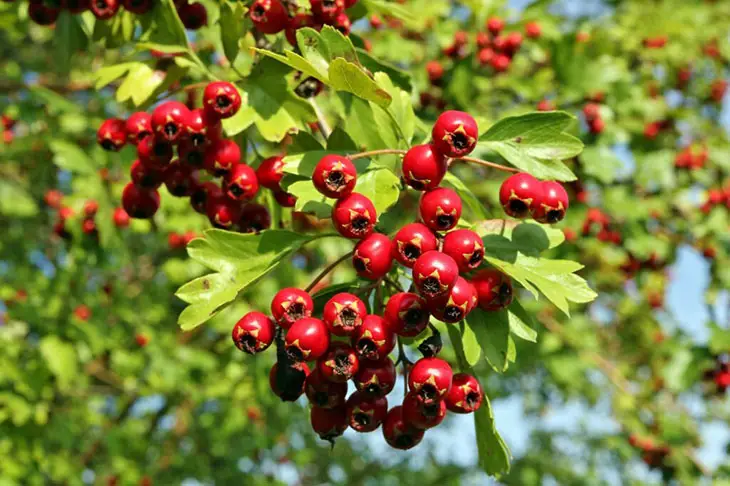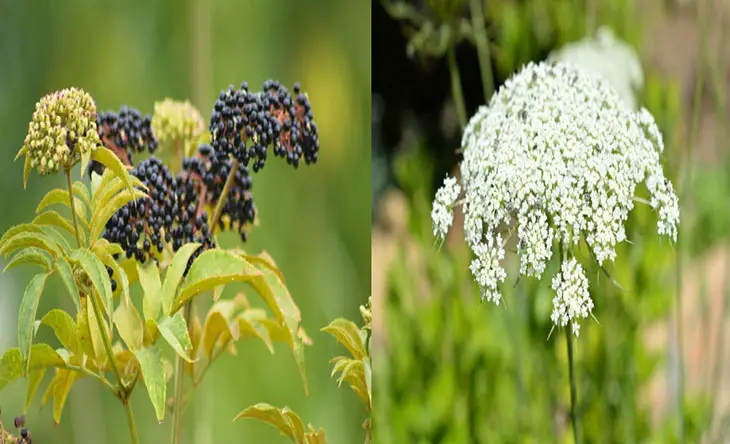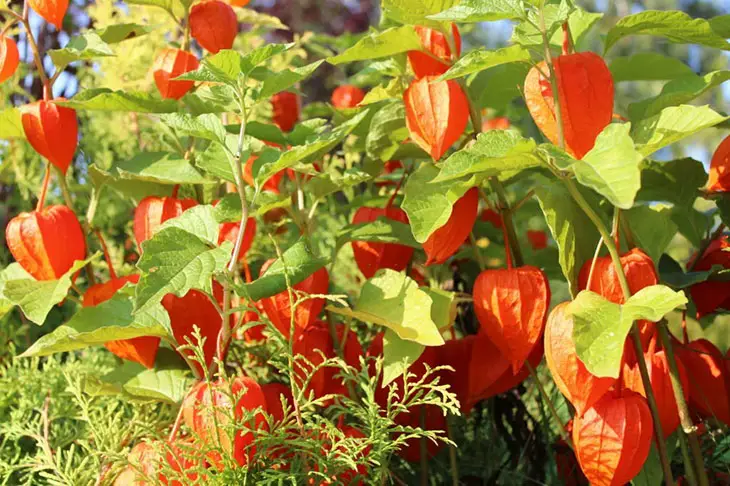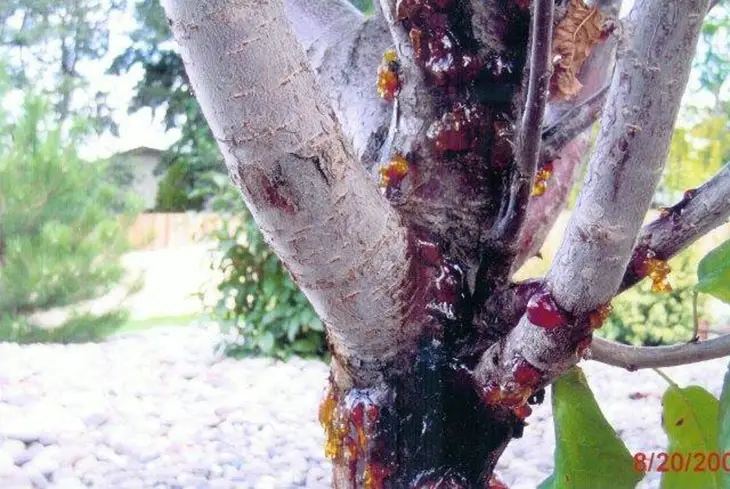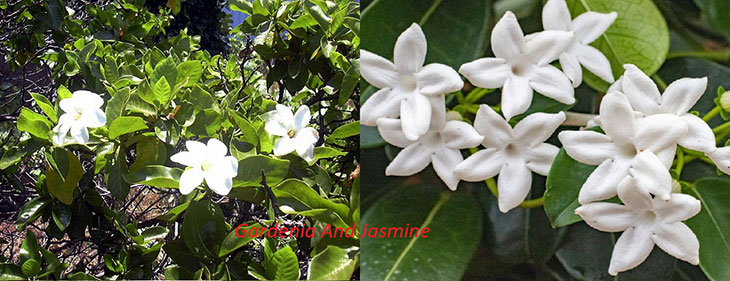
Gardenias and jasmines are two common kinds of flowers in our life. They are sometimes confused since they both have strong odors and similar white blossoms.
Yet, gardenias and jasmines are separate plant varieties that grow in different environments and produce diverse fragrances and flowers.
The closer you get to these two flowers, the easier it is to tell them apart. It is critical to understand the fundamental differences, especially if you intend to have either in your garden!
This post will provide the difference between gardenia and jasmine. This way, you can pick the most suitable one for your yard.
What Is The Difference Between Gardenia And Jasmine?
Although people often confuse these two, they also have some distinctions, making them unique. The differences include planting season, flowering season, stems and branches, flowers, plating zone, leaves, and scents.
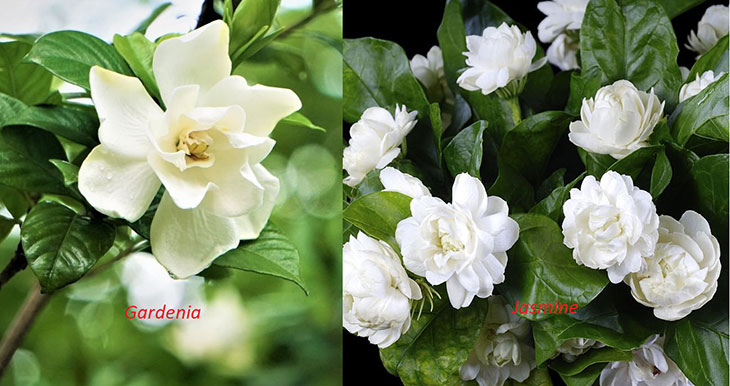
Planting Season
Once planted, both these two blooms all year. However, there are significant variances in when these plants should be sown to maximize propagation.
Gardenias will be best planted in the fall if you live in Zone 8 or another warm region. Yet, if you reside in a cooler climate, like USDA Zone 7, you should grow them in the spring.
Planting gardenia in the spring allows them to establish themselves in the soil before the cool weather arrives.
Overcoming the harsh winters in Zone 7 can also help the gardenias recover and blossom again once the cold season has passed.
Meanwhile, it’s recommended to plant jasmine in the spring. This lets them develop, proliferate, and flower throughout the spring and into the fall.
In case you want to grow jasmine as a twining vine, you should have a framework to support it, such as a trellis or an arbor, or it might droop and cannot propagate properly.
Flowering Season
The second most obvious difference is their flowering period.
In fact, the blossoming season of jasmine will be longer and might last until November. Unlike gardenia, kate jasmine flower blooms are not dispersed.
On each branch, there may be three or more flowers.
When jasmine starts to bloom, you can see a bud appearing first in the spring. After the blooming season, the calyx splits into roughly 8 parts, and the bud becomes spherical.
Jasmine also has both a double and single valve. Its blooms are tubular as well, with silky single petals.
Gardenia’s flowering season is shorter and lasts until August. During blooming, each branch has only one bloom. Prior to flowering, you will observe the spiky bracts, which break into 5 once it flowers.
The flowers are likewise often flat, pinwheel-shaped, and double-petaled, as opposed to Jasmine’s tubular form.
Thus, if you notice something blossoming in the autumn and aren’t sure whether it’s a Jasmine or Gardenia, you now know what it is!
Branches And Stems
Another distinction between these two is their branches and stems. First, these part colors are noticeably different. Gardenia stems have lighter to gray, while jasmines have a darker color.
Furthermore, the branches of jasmines tend to wind and climb themselves around other things or plants. It’s a scrambler, similar to forsythia, lilac, or privet.
Gardenia is a shrub with highly strong and rigid branches akin to dogbane, periwinkle, or frangipani.
Gardenia shrubs can be poisonous. Because of the milky sap, having them in the yard is not a good idea, especially where youngsters may get them.
Both of these plants can be cultivated as shrubs. However, plant care and propagation are distinct. Jasmine is a semi-vining shrub that climbs, trellises, and grows 5 – 10 inches yearly.
As a result, they will require periodic pruning to aid in the multiplication and growth of the plant.
Gardenia also requires pruning to protect the bush from spreading too far. However, unless the plant is just planted, pruning is confined to when it has done flowering.
Young gardenias call for more pruning than older plants.
Blossom Pattern
Gardenia is a subtropical flower that blooms all year round in warm climates. As mentioned, gardenias bloom in late spring to early summer and continue through autumn in colder climates.
Gardenia jasminoides, also known as Common Gardenia, are evergreen shrubs with dark-green foliage and white blooms that are often stacked.
Jasmine blooms, unlike gardenias, are slender and have about four or five petals in the shape of a star.
Although most jasmines are white, certain types, such as Primrose Jasmine and Asian Star Jasmine, have pale-yellow or yellow blossoms.
Planting Zone
You should plant these two flowers in partial shade and full sun.
Gardenias, in particular, are significantly more susceptible to sunshine than jasmines. As a result, you’ll want to put your gardenias somewhere that will protect them from the hot noon heat.
Gardenias will prefer temperatures about 70° F. The temperature at night should be between 60 and 65°F to facilitate the plant growth.
Besides, jasmines demand slightly cooler conditions than gardenias, despite being less sensitive to sunshine. Temperatures between 65 and 75°F are ideal for growing jasmines.
Leaves
The leaves of jasmines and gardenias are one of their most distinguishing characteristics. Jasmines have short leaves ranging from 1.2 to 3.15 inches centimeters.
The leaves are stubby and appear unsuitably with the delicate and lengthy flower petals.
Gardenia has lustrous and green leaves. They have a length of around 4.7 inches. However, compared to the leaves of jasmine, leaves of gardenia are longer.
This is one of the simplest methods to distinguish between a gardenia bush and a jasmine vine.
Scent
The gardenia vs jasmine scent also set them a part. Both have a lovely and sweet aroma, but their fragrant flowers have unique notes of scents that most people can identify after becoming acclimated to them.
The bouquet of gardenias is much stronger than that of jasmine and can become overpowering and irritating if the plant is too close to living rooms.
Jasmine gives off a significantly more indolic aroma than that of gardenia, yet gardenias have a stronger scent. Gardenias have a tropical note, resembling a hybrid of methyl benzoate and jasmine.
It can smell like root beer or wintergreen, clove-like, and there is sometimes a sweet note like an overripe banana!
In short, if the flower exudes a milky, sweet, or minty fragrance, it can be gardenia.
More Information About Taking Care Gardenia And Jasmine
Gardenia
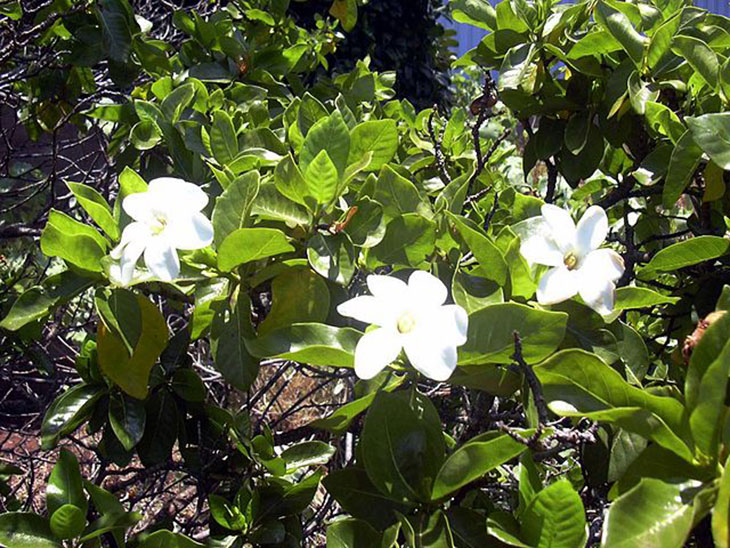
Here are things you might note to grow your gardenia flower properly:
- Gardenias prefer full sun, particularly in the harsh winter. A little shade in the afternoon, followed by the full sun in the morning, maybe ideal in warmer areas. Still, too much sun in warm weather can scorch the leaves, turning them brown or yellow.
- Most gardenia varieties bloom and thrive in acidic, moist, and organic soil. Always maintain the soil’s pH between 5 and 6; keep it moist but not overwatered. To encourage flower growth, amend the soil with manure or organic mulch.
- Gardenias flourish in humid conditions! You can use a humidifier to cultivate gardenias indoors. Otherwise, apply water spray on it on a frequent basis to keep them moist and shoo bugs that are attracted to dryness away.
- This flower requires fertilizing every 2-4 weeks during the growing season to guarantee proper development. Fertilize just throughout the growing season.
- Gardenias also need shaping/pruning while latent to promote development and branching.
Jasmine

How about ways to grow jasmine? Here are some tips you should note down to ensure good development for your flowers:
- Summer-flowering jasmine, such as Arabic and common jasmine, necessitates direct sunlight to bloom completely. Other jasmine kinds, like Winter jasmine, flourish in the midday shade.
- Moist and well-drained soil is ideal for planting jasmines. In hotter climates, the soil should be irrigated often but allowed to dry between periods. The optimal soil for jasmine development is loamy and sandy.
- Jasmine vines love to grow tall! Like zucchini need a trellis, you should aid the vine by lightly passing it through a trellis and tying it to a fence or a trellis.
Because the vine’s natural habitat is spreading and climbing, do not plant it in the soil deeply. Allow its leaves to grow freely!
- Pruning jasmine vines regularly encourage them to bloom more frequently while maintaining dense, vigorous foliage. Examine the plant for any dead stems or stems growing away from it.
- Maintain the trained plant by cutting any tangled or broken stems. Jasmine should be pruned as soon as they blossom for the vine to grow quickly.
Conclusion
Jasmine and gardenia are both prominent spring-blooming flowers. They are sweet-scented and are frequently used at anniversaries and weddings.
Similar to Hong Kong orchids’ benefits, their oil extracts make wonderful fragrance materials for bath products and perfumes.
Although their appearances are similar due to white flowers, the difference between gardenia and jasmine is notable.
So, if you want to distinguish these two beautiful flowers, refer to the characteristics this article just listed. The variances between jasmine vs gardenia make them shine in different ways!
Depending on your personal preference and house conditions, you can choose the favorite flower that makes you feel comfortable and easy to grow.
